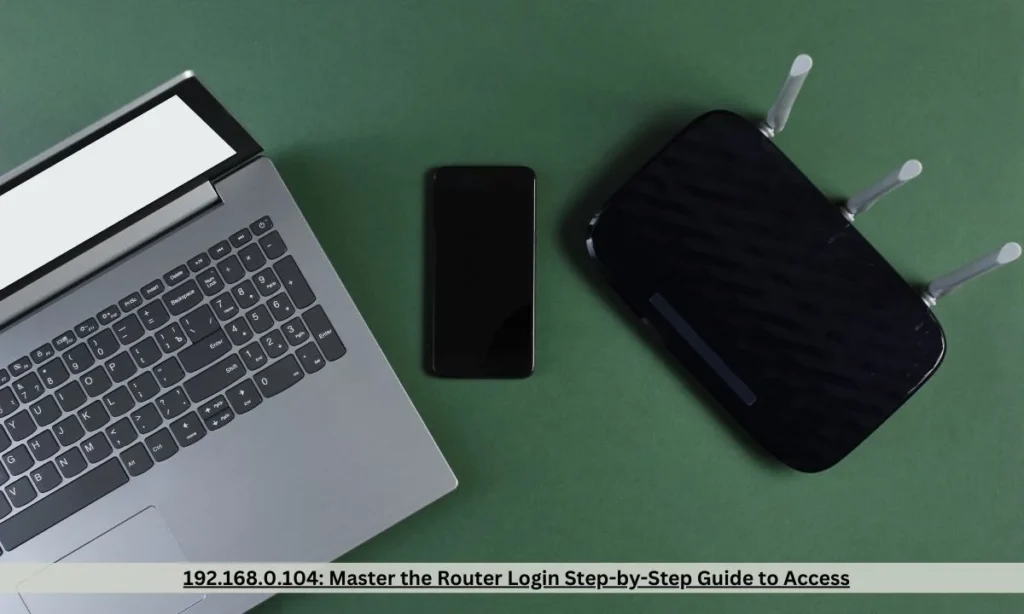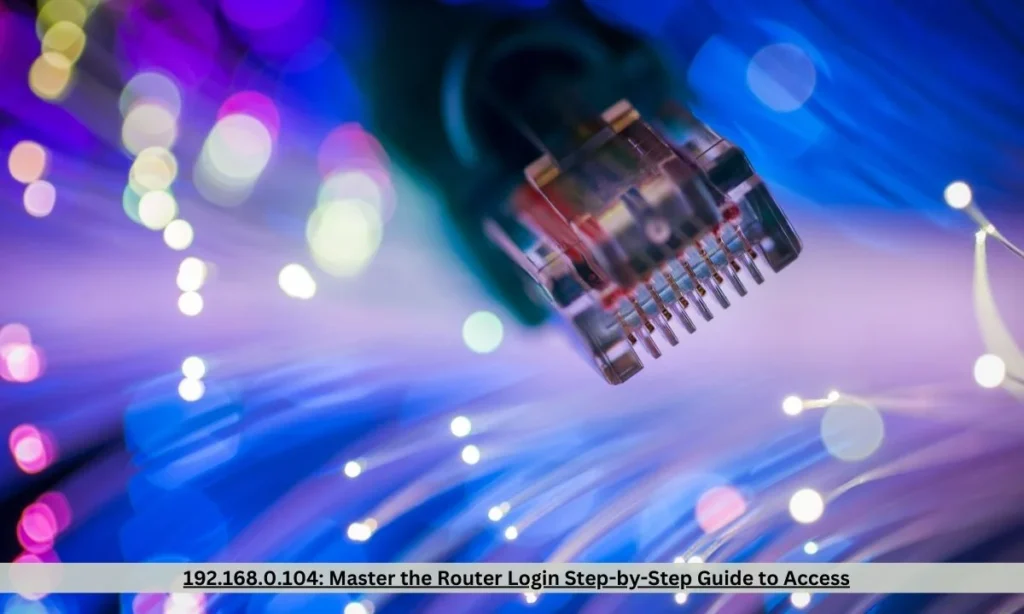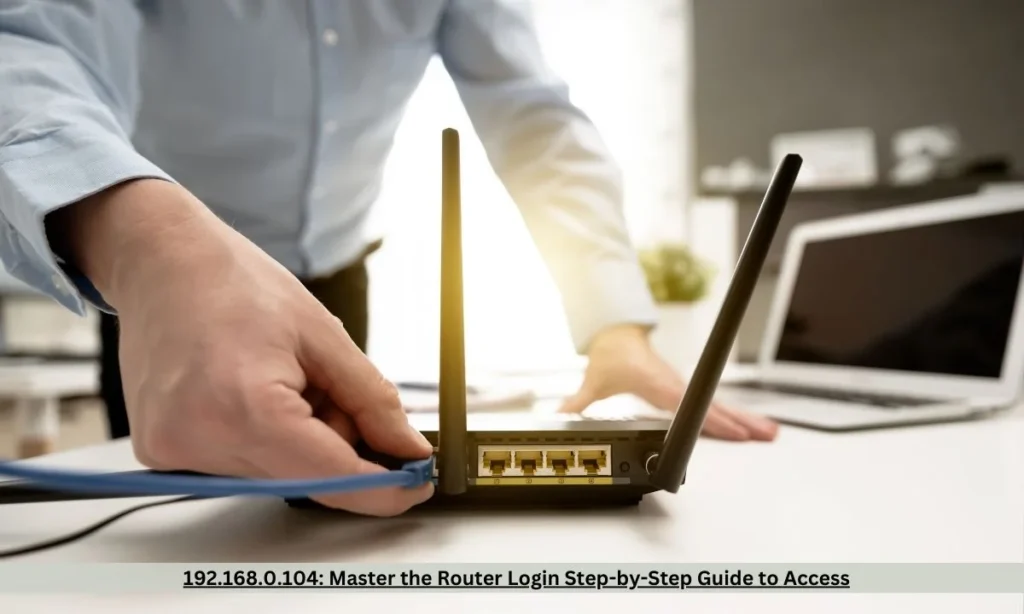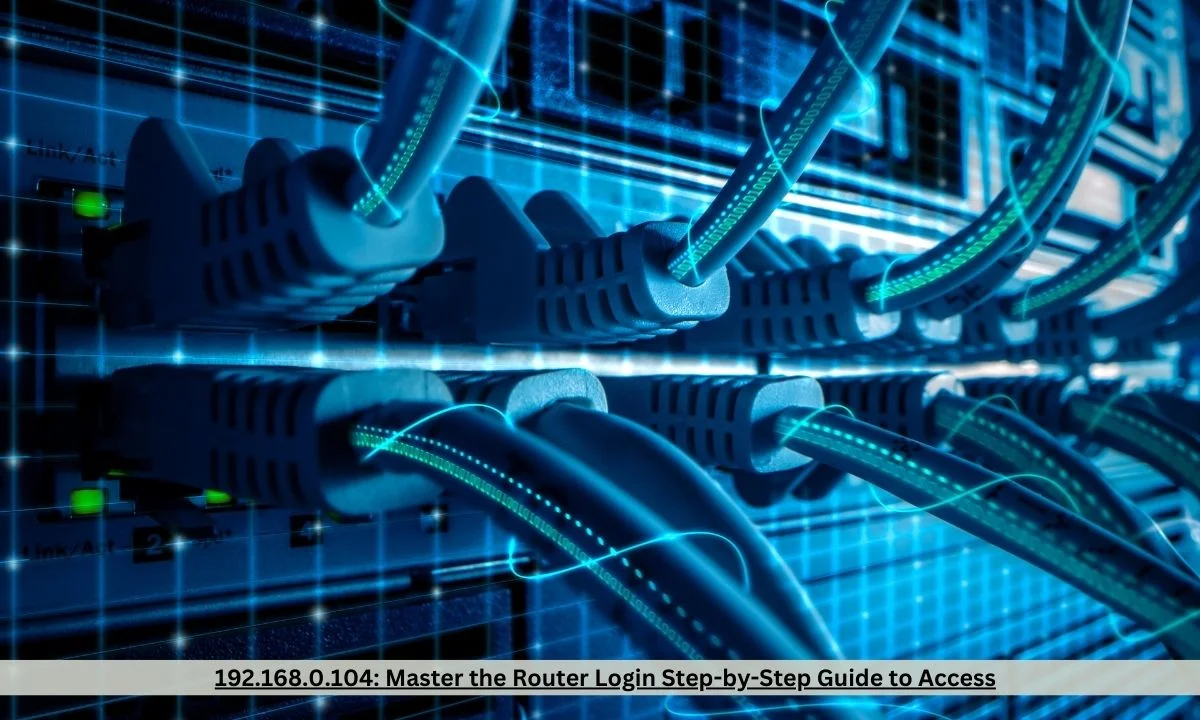Accessing your router’s administration page is crucial for configuring various network settings. The IP address 192.168.0.104 is a default private IP address commonly used by many routers for local networking purposes. In this article, we will detail how to use this IP address to log into your router’s admin page, solve common connection issues, and walk you through the steps needed to change settings like the default username and password. Let’s dive into the solutions and methods to get the most out of your router’s settings.
How to Log in to the Router Using 192.168.0.104
To access the router’s administration page using the IP address 192.168.0.104, follow these steps:
- Connect to the Network: Ensure that your device (PC, laptop, or smartphone) is connected to the same Wi-Fi network or through an Ethernet cable directly to the router.
- Open a Web Browser: Use any modern browser such as Google Chrome, Mozilla Firefox, or Microsoft Edge. In the address bar, type
http://192.168.0.104and hit Enter. - Login Credentials: Once the login page appears, you’ll need to input your username and password. In most cases, the default credentials are:
- Username: admin
- Password: admin (or sometimes blank).
- Access the Admin Interface: After entering the correct credentials, you will have access to the router’s admin interface where you can configure your settings.
Read Also: 10.194.1.6: Mastering Router Access and Troubleshooting

Reasons Why You Might Not Be Able to Access 192.168.0.104
There are various reasons why you might experience difficulties accessing the admin page at 192.168.0.104. Here are some common causes and their solutions:
- Incorrect IP Address: Ensure that the router’s IP address is indeed 192.168.0.104. You can confirm this by opening a Command Prompt on your PC and typing
ipconfig(on Windows) or usingifconfigon macOS or Linux. Look for the Default Gateway. - Router Configuration Change: Sometimes, the router’s IP address may have been changed from the default. In this case, resetting the router to factory settings might be necessary.
- Network Issues: If you’re experiencing network connectivity problems, restart your router by unplugging it, waiting for 10 seconds, and plugging it back in. Also, check that the Ethernet cables are securely connected.
- Browser Cache Issues: Clear your browser cache or try using a different browser. Occasionally, saved data may cause issues in loading the router’s admin page.
- Firewall or Antivirus Blocking: Your firewall or antivirus software might be preventing access to the router’s interface. Temporarily disable them to check if this resolves the issue.
What If You Are Redirected to Your Internet Service Provider’s Login Page?
In some cases, attempting to access 192.168.0.104 may redirect you to your ISP’s login page. This can happen when the IP address is within the same range used by your Internet Service Provider for their own login systems. Here are a few steps you can take to resolve this:
- Check Your Router’s IP Address: As previously mentioned, ensure that the router’s default IP is still 192.168.0.104. If your ISP’s login page appears, your router might be using another address. Use the
ipconfigorifconfigcommand to verify the correct local IP. - Change the Router’s IP Range: If the issue persists, consider changing the IP address range of your router. This can be done by logging into the admin page (once you gain access) and modifying the DHCP settings to use a different IP address, such as 192.168.1.1 or 192.168.2.1.
Read Also: 111.90.150.204: A Comprehensive Guide to Accessing and Securing Your Router

What is the Default Username and Password for Routers Using 192.168.0.104?
The default username and password for routers using 192.168.0.104 as the login IP address often follow these formats:
- Username: admin
- Password: admin or blank (sometimes “password” or specific to the manufacturer like “1234” or “user”).
It’s important to note that these defaults are usually the same across many router brands (e.g., Netgear, TP-Link, Linksys), but you should always consult the router manual or the sticker on the device itself for accurate information.
How to Change the Password of Routers Using 192.168.0.104
One of the first things we recommend after successfully logging into your router’s admin page is to change the default password. This is crucial for enhancing your network security. Here’s how to do it:
- Log in to the Router Admin Page: Access the router admin page as explained earlier using 192.168.0.104.
- Navigate to Security Settings: Once logged in, look for a section labeled “Security,” “Wireless Settings,” or “Admin Settings”. This is where you’ll typically find the option to change the password.
- Set a New Password: Choose a strong password that combines letters, numbers, and special characters. Avoid using easily guessed information such as birthdays or simple sequences.
- Save Settings: After entering your new password, ensure that you click “Save” or “Apply” to make the changes effective. You may be required to log back in with the new credentials.
How to Restore the Factory Settings of Routers Using 192.168.0.104
If you’re experiencing persistent issues or have forgotten your login credentials, restoring the router to factory settings may be necessary. This process will reset all customized settings, including the admin username and password, Wi-Fi SSID, and security settings. Here’s how you can do it:
- Locate the Reset Button: On most routers, the reset button is a small, recessed button located at the back of the device. You may need a paperclip or a similar tool to press it.
- Press and Hold the Reset Button: Hold the reset button for 10-15 seconds until the router’s lights start blinking. This indicates that the router is resetting.
- Wait for the Router to Reboot: The router will restart, and once the lights are steady again, the router will be restored to its factory settings. You will need to use the default 192.168.0.104 IP and the default credentials to log back in.
- Reconfigure the Router: After resetting, you will need to re-enter your custom network settings, including the Wi-Fi name, password, and other preferences.
Read Also: 172.27.27.1: Ultimate Guide to Configuring, Securing, and Troubleshooting

Conclusion
Accessing the router’s administration page using 192.168.0.104 offers users full control over their home or office network. Understanding how to log in, change your settings, and troubleshoot common issues is vital for ensuring that your router performs optimally. Whether it’s resetting the password, fixing access problems, or restoring factory settings, these detailed steps should help resolve most router-related concerns.
